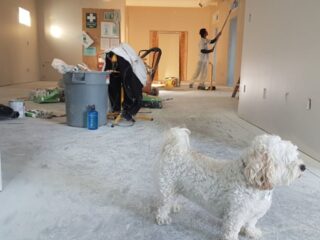
Having a creative moment boosts the confidence of artists, especially since these instances come unexpectedly. However, anyone who’s not a creative person believes creativity flows in a constant state without the latest gears or resources, which is far from the truth. People get inspired by external elements, but factors like personal experiences and exposure to artistic things also determine their imagination.
Of course, there are numerous studies and opinions on this subject. For example, Hungarian psychologist Mihály Csíkszentmihályi considered that we reach peak creativity when we balance the task’s difficulty level and our skills. Therefore, easy tasks lead us to be distracted, whereas more complex occupations only stress us out.
But how can you find inspiration when experiencing a creative block? You know, that moment when you’re eager to do something great, but the spark is missing? Let’s discuss it.
What’s the creative block?
Creative blocks happen to all artists and visionary people. Since our mind is affected by various external elements, we might not always rely on the brain to be in creative mode 24/7. Whether we’re going through a breakup or recovering from an illness, these moments can hinder creativity. And that’s all right.
But how do we overcome it, especially when we rely on our skills for financial purposes? If you sell your art online, there’s a chance for passive income, but it won’t last forever. As an artist, you should be able to create new designs and concepts to keep your online audience engaged.
You may be able to get over the moment if you can pinpoint the kind of creative block you’re experiencing since there are more.
What are the types of creative blocks?
As an artist, you’ll face various types of creative blocks throughout your career. One of the most common is the mental block, during which your thoughts start to wander too much and hinder creative freedom. You might limit yourself by thinking about your own boundaries and being critical of your art.

In this case, it would be best to change your approach and stop making assumptions about what people would like or how this moment would influence your career. Instead of asking yourself, “What if? ” try to do something creative, like listening to music or watching a movie. These activities will allow your mind to be free from intrusive thoughts again.
What about the emotional barrier?
Managing thoughts might be easier than managing feelings, considering how prominent they can be. The emotional barrier is difficult to overcome, especially when getting out of your comfort zone. Creating can sometimes reveal parts of ourselves that we find painful or embarrassing. Therefore, we tend to procrastinate and sit with our thoughts until we find something more appropriate.
However, this emotional obstacle will only hinder what’s best for you. To better represent this idea, we can take a peek at a quote from the animated series Blue Eye Samurai. The Swordsfather character tells Mizu how an artist gives his all to his art, including strengths and deficiencies.
What are the other barriers?
Unfortunately, artists have many more challenges to overcome when it comes to pursuing their creative pursuits. Sometimes, your regular work habits will simply stop being efficient, and you’ll find yourself trying to cater to new habits to help with the creative process. That’s why it’s recommended to take a step back, view the situation from the third person, and be the story’s narrator. If you can detach yourself from the situation, you might be able to find the source of the problem.
Another issue is the communication breakdown, which is not acknowledged. This is especially true if you work in a team of creative people, which is not uncommon. Manga creators, for example, work in teams to finish the end product, but this also applies to animated shows like Arcane, where a bunch of people must be on the same page for the project to move on.
We know how difficult it can be to communicate your ideas to people so they understand and don’t assume anything. That’s why you should be able to sharpen your communication skills and get straight to the point when needed, despite being an introverted person, for example.
Are there ways to enter the creative flow state?
Now that you know about possible situations when dealing with the creative block, it’s time to use that knowledge to enter the creative flow. Note that each artist has a different approach, but having a starting point can help you figure out what works best for you in time.
The closest thing to controlling your creativity is becoming a little bit disciplined. Start making a list of priorities, write in your bullet journal, or simply call a friend to lay out all your thoughts and feelings. From this point on, you can organize them better.

On the other hand, another great strategy to get back on track is to take a break from creative activities for some time and simply unwind. Spend some time in nature, eliminate digital distractions, or do a basic activity so you can recharge your batteries and come back to your art with a fresh perspective.
But how long should you expect this creative block to last? You can never know. However, many artists struggled to return to their art after taking a break, which stressed them out considerably. Remember that this moment will not take forever, and you’ll be able to reach your peak again.
What’s your creative block moment like?
Every creative person knows how frustrating it is to have ideas but not be able to put them into a tangible form. Whether you write, paint, or sing, you’ve seen how the creative act can sometimes be overwhelming. Luckily, you may be able to identify the reason. Sometimes, your thoughts get in the way, but feelings also hinder creativity. After placing the source, you can take action. Have a break, listen to some music, and enjoy the ride.



